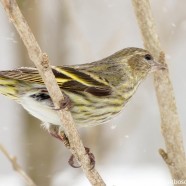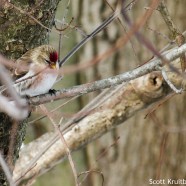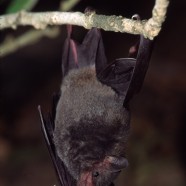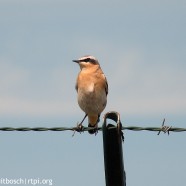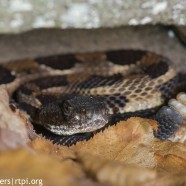Pine Siskin (Spinus pinus) invasion
A Pine Siskin (Spinus pinus) invasion is underway with birds expanding across a sizable swath of the United States. On some conducive flight mornings it is hard to go outside without seeing or hearing some flying south! Have your feeders been swamped with hungry new arrivals? If you do not have them yet you may soon.
Read MoreCommon Redpoll (Acanthis flammea)
One irruptive bird species we can anticipate seeing many more of soon is the Common Redpoll (Acanthis flammea). Ron Pittaway’s 2014-15 winter finch forecast projected the species to make a “moderate to good flight” this fall and winter due to “variably poor to average” birch seed crops in the boreal forest. It can often take until December to really see them on the move but the forecast is already coming true in northern areas of the U.S. Get your thistle feeders ready now! Scott Kruitbosch Conservation & Outreach Coordinator
Read MorePallas’s Long-tongued Bat (Glossophaga soricina)
This Pallas’s Long-tongued Bat (Glossophaga soricina) by Twan is hanging out, awaiting Halloween. What are you up to outdoors today? It is so gorgeous and warm outside across the Eastern United States that seeing a late migrant bat would not be out of the question! Not this one, though…
Read MoreNorthern Wheatear season
The Northern Wheatear is undoubtedly one of my favorite North American nesting species despite the fact it is one of the toughest to find in the contiguous United States. I have no real reason for why I love the bird except for the fact that it is so difficult to call it simply a “North American” species and I admire its biology. Two populations nest on the continent with a western group breeding in Alaska and far northwest Canada with an eastern group in north central and northeastern Canada, the former group migrating southeastward across Asia to move to Europe and finally...
Read MoreTimber Rattlesnake near den
After a lot of feedback let’s keep talking about Timber Rattlesnakes today. In the Northeast, Timber Rattlesnakes are extirpated in ME and RI and down to – at best – a handful of populations in NH, VT, MA and CT. They have a severely reduced range in NY. According to the Centers for Disease Control and Prevention a grand total of about five people die per year from any venomous snake bite in all of America. The vast majority of those bitten have been harassing or aggressively attacking the snake without cause. Like nearly any other wild creature if you leave it alone it...
Read More



